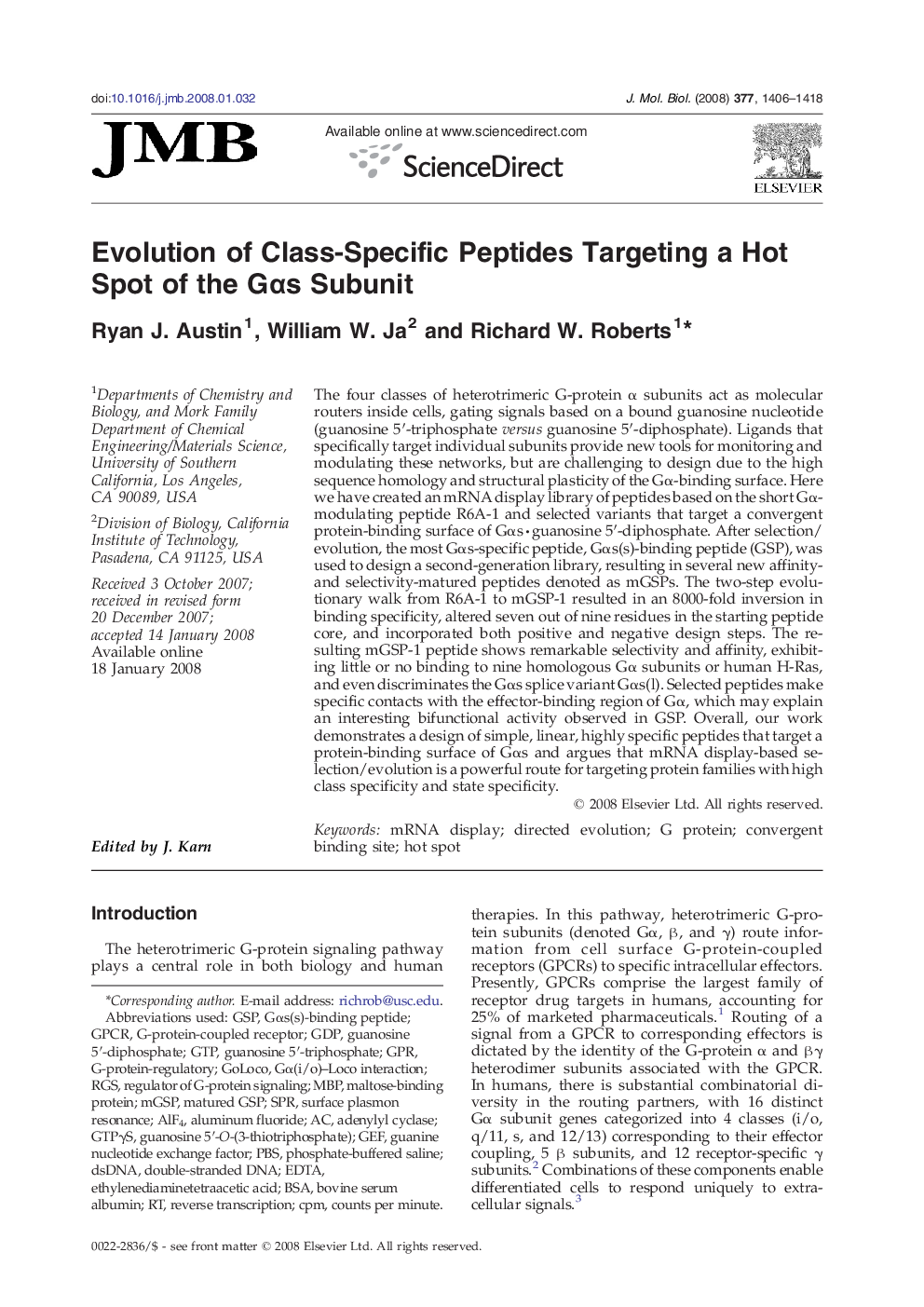| Article ID | Journal | Published Year | Pages | File Type |
|---|---|---|---|---|
| 2187754 | Journal of Molecular Biology | 2008 | 13 Pages |
The four classes of heterotrimeric G-protein α subunits act as molecular routers inside cells, gating signals based on a bound guanosine nucleotide (guanosine 5′-triphosphate versus guanosine 5′-diphosphate). Ligands that specifically target individual subunits provide new tools for monitoring and modulating these networks, but are challenging to design due to the high sequence homology and structural plasticity of the Gα-binding surface. Here we have created an mRNA display library of peptides based on the short Gα-modulating peptide R6A-1 and selected variants that target a convergent protein-binding surface of Gαs·guanosine 5′-diphosphate. After selection/evolution, the most Gαs-specific peptide, Gαs(s)-binding peptide (GSP), was used to design a second-generation library, resulting in several new affinity- and selectivity-matured peptides denoted as mGSPs. The two-step evolutionary walk from R6A-1 to mGSP-1 resulted in an 8000-fold inversion in binding specificity, altered seven out of nine residues in the starting peptide core, and incorporated both positive and negative design steps. The resulting mGSP-1 peptide shows remarkable selectivity and affinity, exhibiting little or no binding to nine homologous Gα subunits or human H-Ras, and even discriminates the Gαs splice variant Gαs(l). Selected peptides make specific contacts with the effector-binding region of Gα, which may explain an interesting bifunctional activity observed in GSP. Overall, our work demonstrates a design of simple, linear, highly specific peptides that target a protein-binding surface of Gαs and argues that mRNA display-based selection/evolution is a powerful route for targeting protein families with high class specificity and state specificity.
